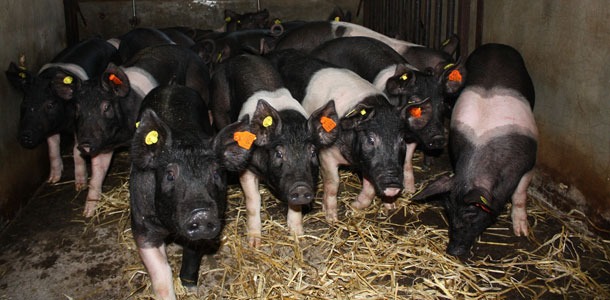 Many have highlighted how this means improving feed efficiency and increasing output per square metre of farm (land is expensive and the planning process difficult for new farms). There is, however, an additional dimension to feeding more people with fewer resources when those resources include lowering the levels of medication used in agriculture. This has even made it onto the agenda of the G8, with the UK government raising the issue of antibiotic usage in agriculture.
Many have highlighted how this means improving feed efficiency and increasing output per square metre of farm (land is expensive and the planning process difficult for new farms). There is, however, an additional dimension to feeding more people with fewer resources when those resources include lowering the levels of medication used in agriculture. This has even made it onto the agenda of the G8, with the UK government raising the issue of antibiotic usage in agriculture.
So, why is this a high profile issue? The answer is not the plight of agrifood but the concerns of the challenge this presents to human health. The concern of governments is that increased use of antibiotics may increase levels of resistant bacteria reducing treatment options for human medicine. In the USA, ten times more cases of meticillin resistant Staphylococcus aureus (MRSA) occurred in children’s hospitals in 2008 than a decade earlier and, from 2000 to 2009, admissions to hospital associated with Clostridium difficile doubled to 336,000. The World Health Organization has also raised concerns that Salmonella, Campylobacter, E coli, and Enterococcus species endemic to livestock populations could be the next to develop levels of resistance.

There are also incentives for producers to reduce their reliance on medication in their herd. With the latest BPEX figures showing vet and medication costs contributing on average 3.6p/kg to the cost of production and with overuse of treatments leading to a loss of their effectiveness – for example, the use of streptomycin to treat Mycobacterium tuberculosis and the use of anthelmintics to treat worms in sheep – it is in the interests of the producer, as well as the consumer, to reduce the use of medication in the herd. But how can this be achieved without compromising the welfare of the animal and the viability of the pig production business? The answer is by identifying stock from systems that have produced animals that have high levels of innate immunity and resistance or resilience to endemic disease. One such location is the nucleus breeding programme for the Swedish sire line Hampshire.

In 1986, Sweden banned all the growth promoting antibiotics in their pig production system. This ban was to be followed later by the EU in 2006 however the Swedish population had 20 years progress, typically 13-14 generations of progress of selecting and growing animals in an environment free of antibiotic growth promoters. During this time, animals had been subjected to the same on farm conditions that they had previously when they were assisted by their antibiotics but now had to cope on their immune systems alone. The result is that the selection process favoured those animals that performed without medical aid and those animals made a greater contribution to future nucleus populations, following Charles Darwin’s fittest theory to the letter. The result is that the Swedish Nucleus Hampshire population is more robust when dealing with disease challenge.
How do we know this? There are several direct indicators and other evidence to suggest the immune superiority of the Hampshire line. Firstly, the performance of the progeny, even on farms with high levels of endemic disease challenge, is significantly better than its rivals. Higher growth rates and lower levels of morbidity and mortality are indicative of a genotype that thrives rather than merely survives on UK farms. Genotype data also suggests some important changes have taken place in the population. The genes that control resistance to E. Coli K88, contain a higher frequency of resistance alleles in comparison to other breeds, meaning a much lower incidence of scour in newly born piglets. Finally, and most importantly, is the experience of pig producers. Some producers, in consultation with their vet, have gradually removed a number of routine vaccinations from their herd, reduced costs and staff time and have not seen any deterioration in performance.
The overall challenge of producing more with less resource will be a continual battle that ultimately will never be won. However, the desire to reduce medication whilst increasing output is possible now by identifying and using those populations that have adapted to modern constraints of pig production, offering healthy pork and people even without the drugs.



